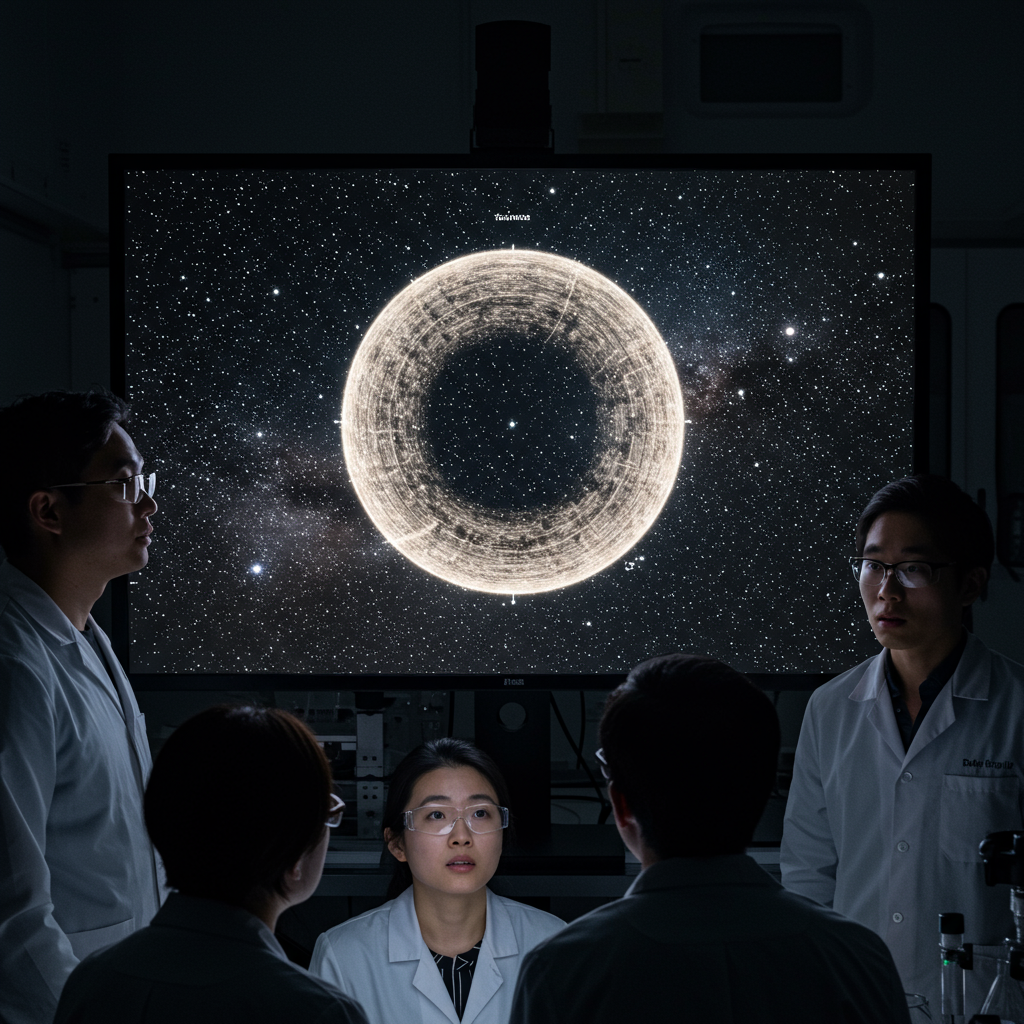A newly identified celestial visitor, designated Asteroid 2025 QV5, recently made a notable close approach to Earth, captivating astronomers and space enthusiasts alike. First detected in late August, this bus-size asteroid zipped past our planet on September 3, offering a fleeting glimpse before embarking on a century-long journey away from our immediate cosmic neighborhood. Its next equally close encounter is not anticipated until September 4, 2125, almost exactly 100 years from its recent flyby. This event underscores the dynamic nature of our solar system and the ongoing vigilance of planetary scientists in tracking objects that share our orbital space.
The Unseen Visitor: Asteroid 2025 QV5’s Recent Flyby
Asteroid 2025 QV5 was initially spotted on August 24, sparking a flurry of observations to determine its trajectory and characteristics. This space rock is approximately 35 feet (11 meters) across, roughly the length of a school bus. It traveled at a blistering speed of over 13,900 mph (22,400 km/h) as it approached Earth. While such speeds might sound alarming, scientists at NASA’s Jet Propulsion Laboratory (JPL) Asteroid Watch meticulously tracked its path, confirming it posed no threat.
During its close approach on September 3, the asteroid passed within 500,000 miles (805,000 kilometers) of Earth. To put this into perspective, that distance is about twice the average distance between Earth and the Moon. Despite this proximity, Asteroid 2025 QV5 is not classified as “potentially hazardous” due to its relatively small size. Even in the highly improbable event of an impact, most of its material would likely disintegrate and burn up harmlessly in Earth’s atmosphere.
Decoding Its Orbit: A Celestial Dance
Asteroid 2025 QV5 follows a roughly circular orbit around the sun, completing one full revolution approximately every 359.4 days. This orbital path frequently takes it between the orbits of Earth and Venus. Its journey involves a subtle gravitational tug-of-war between these two planets, influencing its path over time. This particular flyby on September 3 was especially close compared to other anticipated passes in the near future. For instance, its next flyby in 2026 will keep it 3.3 million miles (5.3 million km) away, and it will be three times further in 2027.
Understanding the precise orbital mechanics of near-Earth objects (NEOs) like 2025 QV5 is crucial for astronomers. These objects, which come within 30 million miles of Earth’s orbit, are constantly monitored. By studying their paths, scientists can predict future close approaches and assess any potential risks. The relatively short orbital period of 2025 QV5 makes it a fascinating object for long-term observation.
Why Scientists Track “Non-Threatening” Asteroids
Even when an asteroid like 2025 QV5 is deemed harmless, its observation provides invaluable scientific data. NASA’s Goldstone radar telescope in Barstow, California, a specialized facility for tracking and imaging near-Earth asteroids, was scheduled to target 2025 QV5. Radar observations offer highly accurate measurements of an asteroid’s position and velocity, refining orbital calculations significantly. They can also reveal details about an asteroid’s physical properties, such as its size, shape, and rotation.
This ongoing vigilance is part of a broader effort known as planetary defense. While immediate threats are rare, continuously cataloging and characterizing NEOs allows scientists to develop more accurate models of their behavior. This proactive approach ensures that humanity is prepared to track and potentially mitigate any future hazardous objects. Every observed asteroid, regardless of its threat level, contributes to this comprehensive understanding.
The Dynamic Nature of Asteroid Predictions
Predicting the exact long-term trajectory of an asteroid for a century or more is a complex task. The precise date and distance of 2025 QV5’s return in 2125, for instance, are based on current calculations and can be refined as more observational data becomes available. Minor gravitational interactions with other celestial bodies, even small, undiscovered asteroids, can subtly alter an object’s course over extended periods. This inherent uncertainty is a key aspect of asteroid science.
A prime example of this dynamic nature is the “city killer” asteroid 2024 YR4. Earlier this year, this asteroid generated headlines when its estimated impact probability for 2032 initially rose to a concerning 1 in 32. However, as scientists collected more observational data, its trajectory was refined. Using the Torino Impact Hazard Scale, which categorizes asteroid risk, 2024 YR4’s classification rapidly dropped from Level 3 (“localized destruction” risk) to Level 0 (“No Hazard”). This real-world scenario demonstrates the importance of continuous observation and the robust scientific process in refining asteroid predictions, often leading to a significant reduction in perceived risk.
Beyond Our Backyard: Other Celestial Encounters
The tracking of asteroids like 2025 QV5 is just one facet of humanity’s broad efforts to understand the cosmos. Space agencies worldwide are also dedicated to observing more exotic celestial visitors. For example, the European Space Agency (ESA) is preparing to study the interstellar comet 3I/ATLAS as it makes a close approach to Mars in late 2025. This “third interstellar” object, unlike most solar system comets, originated from outside our sun’s gravitational influence.
Observations from Mars-orbiting spacecraft like ESA’s Mars Express and ExoMars Trace Gas Orbiter are crucial for imaging and measuring its composition. Even the James Webb Space Telescope (JWST) has turned its powerful gaze towards 3I/ATLAS, yielding “unexpected results.” These collective efforts highlight the scientific community’s keen interest in understanding the characteristics of diverse celestial bodies, from routine asteroid flybys to rare interstellar travelers, continually expanding our knowledge of the universe.
Protecting Earth: The Ongoing Mission
The recent flyby of Asteroid 2025 QV5 serves as a valuable reminder of the constant dance of celestial objects in our solar system. While this particular bus-size asteroid posed no threat, its discovery and tracking exemplify the sophisticated and continuous work undertaken by global space agencies. These efforts are not just about cataloging potential dangers but also about advancing our fundamental understanding of planet formation and orbital mechanics.
Ongoing missions and ground-based observations are constantly refining our maps of the solar system’s smaller inhabitants. The ability to predict an asteroid’s trajectory a century into the future, even with inherent uncertainties, is a testament to the advancements in astronomical science. This dedicated surveillance ensures that we remain vigilant and informed about our cosmic surroundings, fostering both scientific discovery and a robust strategy for planetary defense.
Frequently Asked Questions
What is Asteroid 2025 QV5 and why is it significant?
Asteroid 2025 QV5 is a newly discovered bus-size asteroid, approximately 35 feet (11 meters) in diameter, that recently made a close flyby of Earth on September 3. It is significant because it was spotted just over a week before its close approach, demonstrating the ongoing discovery of near-Earth objects. While not considered a threat, its orbital path makes it a subject of scientific interest, particularly because it will not return to such close proximity for about 100 years, with its next similar flyby projected for September 4, 2125.
How do scientists track asteroids like 2025 QV5, and where can I find more information?
Scientists track asteroids like 2025 QV5 using a combination of ground-based telescopes and specialized radar systems, such as NASA’s Goldstone radar telescope in Barstow, California. These instruments collect data on an asteroid’s position and speed, allowing for the calculation and refinement of its orbital trajectory. Organizations like NASA’s Jet Propulsion Laboratory (JPL) Asteroid Watch and their Small-Body Database Lookup provide comprehensive public data and visualizations of known asteroid orbits and close approaches.
What does the “potentially hazardous” classification mean for asteroids, and should we be concerned about 2025 QV5?
The “potentially hazardous” classification for asteroids is reserved for objects that are both large enough to cause significant regional damage (typically over 100-150 meters) and have orbits that bring them within a certain distance of Earth. Asteroid 2025 QV5 is too small (35 feet) to be classified as potentially hazardous, and even if it were to enter Earth’s atmosphere, most of its material would burn up harmlessly. Therefore, there is no need for concern regarding 2025 QV5; its recent flyby was a routine astronomical observation.
Conclusion:
The recent close approach of the bus-size Asteroid 2025 QV5 serves as a powerful reminder of the continuous, yet often unseen, scientific work happening to safeguard and understand our solar system. From its swift discovery to the precise tracking of its century-long departure, this event encapsulates the blend of advanced technology, rigorous scientific methodology, and international collaboration that defines modern astronomy. As we look forward to its return in 2125, the ongoing study of celestial bodies like 2025 QV5 remains vital for both enriching our cosmic knowledge and ensuring the long-term safety of our home planet.




